| |
|
|
|
|
|
|
|
|
|
|
| |
| |
 |
|
| |
田润德
编译文/图 2020-08-17
20:36 |
|
| |
|
|
|
|
| |
|
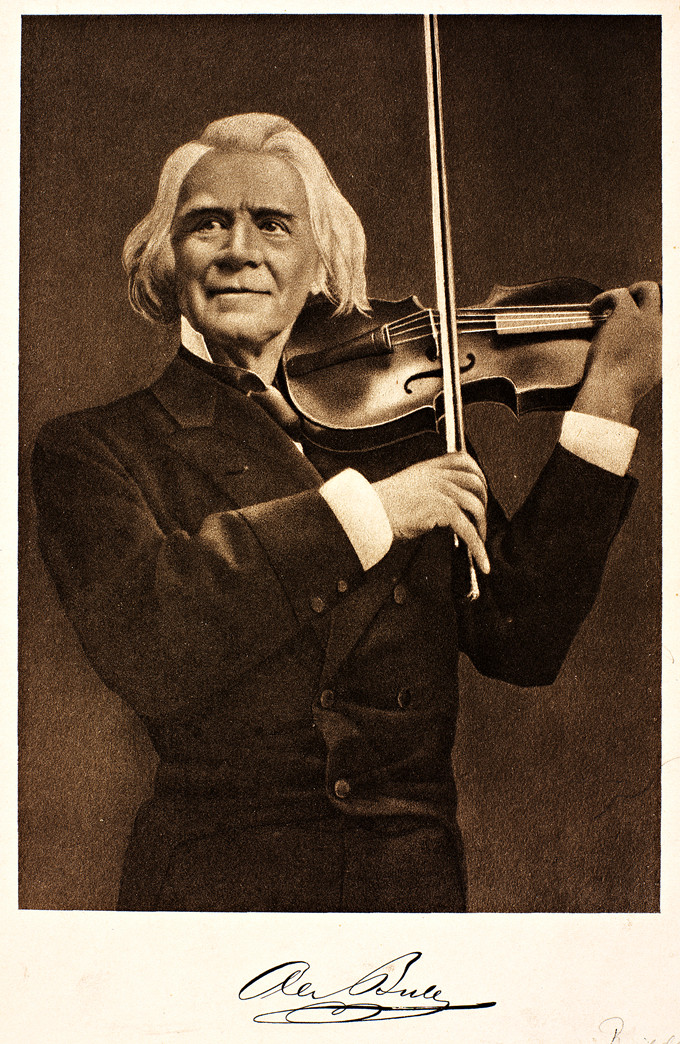 |
|
|
|
| |
|
奥勒.布尔(Ole Bull,1810——1880) |
|
|
|
| |
|
|
|
|
|
| |
|
A大调小提琴协奏曲(“大协奏曲”),作品4 (1834;1864年修订) |
|
|
|
| |
|
Ole Bull - Violin
Concerto in A major ('Grand Concerto'), Op. 4 (1834)
Ole Bull :1810-1880,挪威享誉世界的小提琴大师
A大调小提琴协奏曲(“大协奏曲”),作品4 (1834;1864年修订)
一、maestoso行板-快板maestoso [0:00]
2柔情慢板:柔情慢板[12:39]
3田园Rondo pastorale: Moderato
由挪威著名作曲家和小提琴演奏家Ole Bornemann Bull(1810-1880)创作的第一小提琴协奏曲。
小提琴手:安娜·福尔斯?
指挥:奥勒·克里斯蒂安·路德
挪威广播交响乐团 |
|
|
|
| |
|
Violin Concerto in A major
("Grand Concerto"), Op. 4 (1834; revised 1864)
I. Andante maestoso - Allegro maestoso [0:00]
II. Adagio sentimentale: Adagio sostenuto [12:39]
III. Rondo pastorale: Moderato [15:38]
The first violin concerto by the famous Norwegian composer and virtuoso
violinist Ole Bornemann Bull (1810-1880).
Violinist: Annar Folles?
Conductor: Ole Kristian Ruud
Norwegian Radio Orchestra |
|
|
|
| |
|
|
|
|
|
| |
|
音乐历史上的今天
1880年8月17日,力量派小提琴家奥勒.布尔(Ole
Bull,1810——1880)心力交瘁地在贝根去世。他曾试图在美国宾夕法利亚州建立一块挪威殖民地,在挪威建立一家音乐学院,都已惨败告终。
奥勒·布尔(Ole Bull),挪威著名小提琴家、作曲家。4岁开始学习小提琴,19世纪20年代曾师从瑞典小提琴家伦德霍尔姆学习。
奥勒·布尔(Ole
Bull)是那一时代的小提琴大师,被称为“北欧的帕格尼尼”,演奏敏捷而充满激情。他即兴创作的曲子,也被认为是才华四溢之作。他被视为挪威民族的标志,他的演出和行动,引起了国内外对于挪威民间音乐的关注,这对后来的挪威音乐发展有着至关重要的意义。1860年,他曾倡导建立挪威民族音乐学院,但因经济原因未能如愿,而建立于1976年的奥勒·布尔音乐学院(Ole
Bull Akademiet)则最终实现了他的愿望。
如果大家去搜索引擎搜索Ole Bull,可能不是从其本人展开对这个名字的认识,而是从以Ole
Bull命名的“瓜奈利”小提琴名琴开始。说到这里,我们要谈到一个家族和一个人,这就是意大利提琴创造家族“瓜奈利”家族。这把命名为Ole
Bulll的名琴出自于Joseph Guarneri del
Gesu(约瑟夫·瓜奈里·德尔·耶穌)1744年意大利的克里莫纳(Cremona)。约瑟夫·瓜奈利出生于1698年,是瓜奈利提琴制作家族的第三代,也是家族中最为出色的提琴制作家。他一生共制作约150把小提琴,名字中的del
Gesu或Jesu是因为他做的琴内标有十字架图案。瓜奈利的小提琴也是当今名琴中惟一能与斯特拉迪瓦里(Antonio
Stradivari)制作的小提琴媲美的名琴。意大利著名小提琴演奏家作曲家帕格尼尼(1782-1840)直到去世一直使用瓜奈利1742年制作的一把小提琴。而被命名为Ole
Bull的瓜奈利1744年制作的小提琴,也是因为历史上这把琴的拥有者Ole Bull最为著名而得以“冠名”。
耶穌.瓜奈利于1730年后,其手艺发展至登峰造极之境界,展现出独创性及个人风格,其整体的琴身结构优异且极富创造性,显露出他卓越的制琴天赋。
1730年至1735年这段期间,公认是他制琴的黄金时期。在他辞世的前几年,其作品较为粗獷质朴且不雅致,尤其是琴身的刀斧痕迹,一凿一銼皆表现出十足鲜明强烈的个性,具有独特的吸引力,音质也充满活力。他愈晚期所制作的提琴,在细部处理方面则愈渐偏离1730年至1735年间的精致作品。总之,耶穌.瓜奈里从黄金时期至辞世的短短十四年间,制作出来的那些充满多样性与原创性的小提琴,成为人间至宝,足以与斯塔拉迪瓦里
(Antonio Stradivari)的作品等量齐观,可说是与斯塔拉迪瓦里的琴并列为最顶级的乐器。
耶穌.瓜奈里辞世的1744年,约制作了九支小提琴,其中只有两支贴有原始标签,这支“奥勒.布尔”名琴亦包括在内。根据瑞士重要琴商维若 (Henry
Werro)的臆测,这支作工稍嫌粗略的提琴,证明了当时耶穌.瓜奈里是处于身体衰弱的状况,然而,此琴却实为一件无与伦比的艺术作品。其琴身总长为
352mm,上侧板(upper bout)宽长166mm,中侧板(center bout)宽长110mm,下侧板(lower
bout)宽长203mm。涂漆虽较为稀薄但恰如其分,呈现温暖的黄橙(yellow-orange)色泽。
提琴背板(back)是由两块枫木(maple)所制成,双拼面板(two-piece
belly)则由两块不相称且不同年份的云杉木(spruce)拼板而成。背板的木头质量极佳,有色彩鲜明而呈波状的虎纹(flame),侧板(rib)
木头的斜线虎纹也相当均匀,与背板极为相称。此琴的琴身轮廓较为坚挺刚硬,与耶穌.瓜奈里的加农炮(“II
Cannone”)名琴相较之下,缺乏圆润的弧线。“奥雷.布尔”的双拼面板是由两块不同原木所拼板而成。侧板的斜线虎纹极为均匀双拼背板的虎纹相当鲜明醒目。
当然,最后还要认识一下这位Ole Bull本人,而不是名琴。
舒曼(Robert
Schumann)曾说过:“布尔是最伟大的小提琴家之一”,并将他视为与帕格尼尼(Nicol·Paganini)旗鼓相当的大师。李斯特(Franz
Liszt)更授予布尔“帕格尼尼的强大竞敌”之称号,布尔因此也赢得了“斯堪的纳维亚的帕格尼尼”之称。布尔在提琴史上的历史定位,已不仅止于一位技巧超凡的演奏家,他对小提琴的那股热忱与鐘爱,也使他获得提琴鉴赏行家与收藏名家之头衔,甚至更成为一位极富造诣的制琴家与古琴维修家。
布尔自我独特的詮释概念与表现力、技艺高超的即兴演奏,以及圆润丰满的音色,散发出一股强烈而深刻的感染力,也因此凡其行迹所至之处,皆受到听众高度的赞扬。1836年,布尔于伦敦爱乐协会音乐会(Philharmonic
Society concert)上获得了压倒性的胜利,一跃成名为当时最伟大的小提琴家,英国《泰晤士报》(The
Times)更对其评论道:“他对乐器的掌握能力臻于完美。”1836年至1837年于英国期间,布尔出售他的第一把瓜奈里琴,买了另一支1744年制的瓜奈里琴,并长期使用这支琴于世界性的巡回演奏,而此琴即为奇美博物馆现所收藏的这支“奥勒.布尔”名琴,也无疑是布尔最珍贵的乐器。
根据科希奥国际名琴典藏网(Cozio.com)的统计,布尔一生中曾拥有过十支名琴,其中包括了两支瓜奈里名琴、三支史特拉底瓦里名琴、一支阿玛蒂(Nicol·Amati)名琴及一支达萨罗名琴。布尔拥有的这些大师级名琴,在舞台上著实逐一发挥了他灵敏多变的表现力与适应力。音乐评论家汉斯利克
(Eduard
Hanslick)曾提到自己对布尔演奏技巧的赏识:“泛音与双音的拉奏出奇地稳定与利落,断奏技巧则更为出色,他的演奏无人堪与匹敌,他的音色拥有完美柔和的特质。”就小提琴演奏史层面而言,布尔绚烂的演奏风格,以及饶富戏剧性的表现手法,使他被小提琴家
维厄当(Henry
Vieuxtemps)誉为「演奏奇迹」的提琴名家,可谓实至名归。
今日视频:1、奥勒.布尔A大调小提琴协奏曲(“大协奏曲”),作品4 (1834;1864年修订);【奥勒·波内曼·布尔】A大调小提琴协奏曲。 |
|
|
|
| |
|
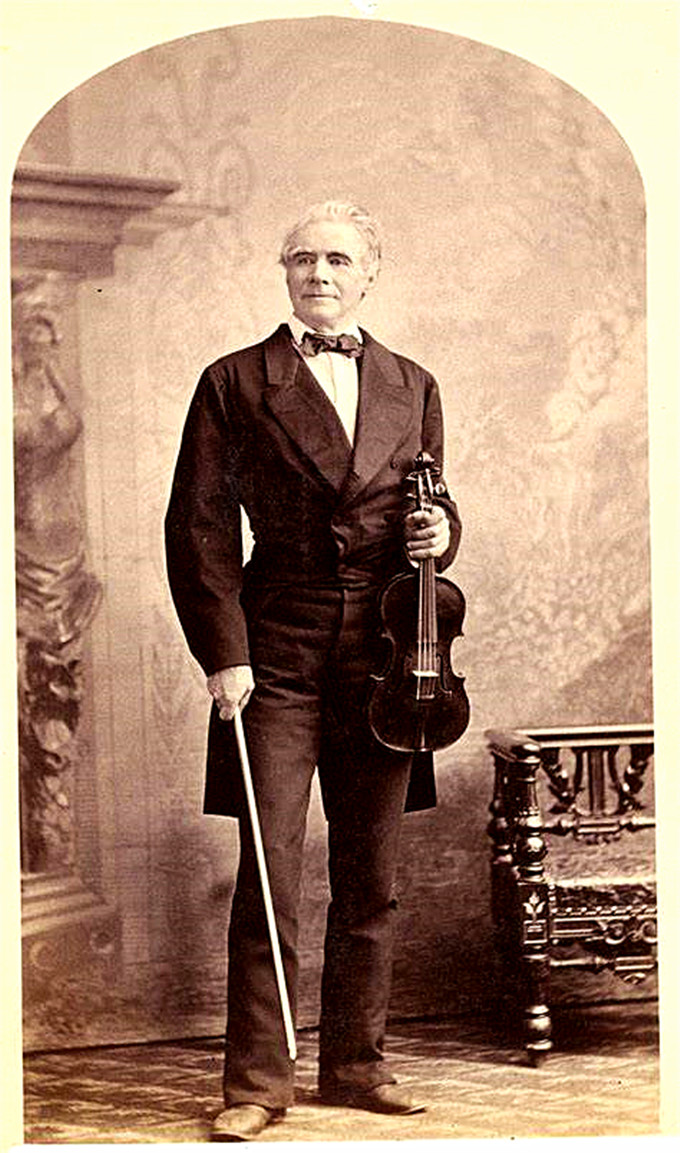 |
|
|
|
| |
|
伟大的挪威小提琴家奥勒.布尔(Ole Bull )
|
|
|
|
| |
|
The great
Norwegian violinist Ole. Bull |
|
|
|
| |
|
作为伟大的小提琴演奏家,布尔同时也是小提琴制作家和收藏家。根据科希奥国际名琴典藏网的统计,布尔一生中曾拥有过十支名琴,其中包括了两支瓜尔内里名琴、三支斯特拉迪瓦里名琴、一支尼科洛·阿玛蒂(Nicol
Amati)名琴及一支达萨罗名琴。布尔拥有的这些大师级名琴,在舞台上着实逐一发挥了他灵敏多变的表现力与适应力。音乐评论家汉斯利克(Eduard
Hanslick)曾提到自己对布尔演奏技巧的赏识:「泛音与双音的拉奏出奇地稳定与利落…
断奏技巧则更为出色,他的演奏无人堪与匹敌…他的音色拥有完美柔和的特质。」约阿希姆亦曾在写给克拉拉‧舒曼(Clara
Schumann)的书信上提到:「布尔对他的乐器有着奇特非凡的掌控能力,他总是精力旺盛、活灵活现地演奏出极其优美的音色。」1892年《史特拉提琴杂志》(The
Strad)记载道:「身为一位演奏家,奥雷‧布尔有驾驭他提琴的最大能力」,不愧乎《纽约前锋报》(New York
Herald)称颂其为「小提琴手之王」。 |
|
|
|
| |
|
A great violinist,
Boole was also a violin maker and collector. According to the Cocio
International Piano Collection network, Boole owned ten famous pianos
during his lifetime, including two Guarneri, three Stradivari, one Nicol
Amati and one Dassaro. Bull has these master piano, on the stage really
play one by one his sensitive and changeable expression and
adaptability. The music critic Eduard Hanslick wrote of his admiration
for Boole's technique: "The overtones and double notes are surprisingly
steady and crisp... the staccato technique is even better, his playing
is unmatched... His timbre has a perfectly soft quality." Joachim also
wrote in a letter to Clara Schumann: "Boole has a strange and
extraordinary command of his instrument, and he always plays it with
great energy and vividness." In 1892, The Strad reported that "as a
virtuoso, Ole Bull has the greatest ability to control his violin", and
the New York Herald praised him as "the king of violinists".
|
|
|
|
| |
|
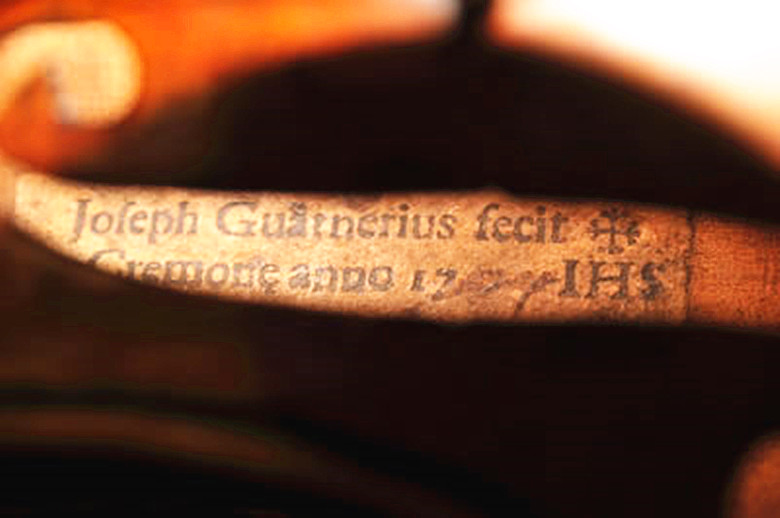 |
|
| |
|
「奥雷‧布尔」的原始标签「Joseph Guarnerius fecit Cremone
anno 1744 HIS」 |
|
|
|
| |
|
Original label of "Ole Bull" :
"Joseph Guarnerius fecit Cremone anno 1744 HIS" |
|
|
|
| |
|
以挪威小提琴家奥雷·布尔(Ole
Bull)命名的耶稣·瓜尔内里(Giuseppe Guarneri del
Gesu)名琴,被希尔(Hill)兄弟视为其「最具特色的作品之一」,极可能是瓜奈里大师最后的遗作。这支「奥雷·布尔」名琴在奇美博物馆馆藏中备受瞩目,已成为「镇馆之宝」,由于其极富深远意义的历史性,更使得奇美博物馆名闻遐迩、蜚声国际。数年间,此琴已四度出借至美国纽约大都会博物馆(Metropolitan
Museum of Art)、挪威卑尔根葛利格博物馆(Edvard Grieg Museum)、法国巴黎音乐博物馆(Mus de la
Musique),以及挪威纪念布尔的电影中亮相。 |
|
|
|
| |
|
The Giuseppe
Guarneri del Gesu, named after the Norwegian violinist Ole Bull, is
considered by the Hill brothers to be "one of his most distinctive
works" and is likely to be Guarneri's last work. This "Ole Bull" famous
piano in the Chi Mei Museum collection has attracted much attention, has
become the "treasure of the town museum", because of its very
far-reaching historical significance, but also makes the Chi Mei Museum
famous far and wide, renowned internationally. Over the years, the
instrument has been lent four times to the Metropolitan Museum of Art in
New York, the Edvard Grieg Museum in Bergen, Norway, and the Mus de la
Musique in Paris, France. And a Norwegian film honoring Boole. |
|
|
|
| |
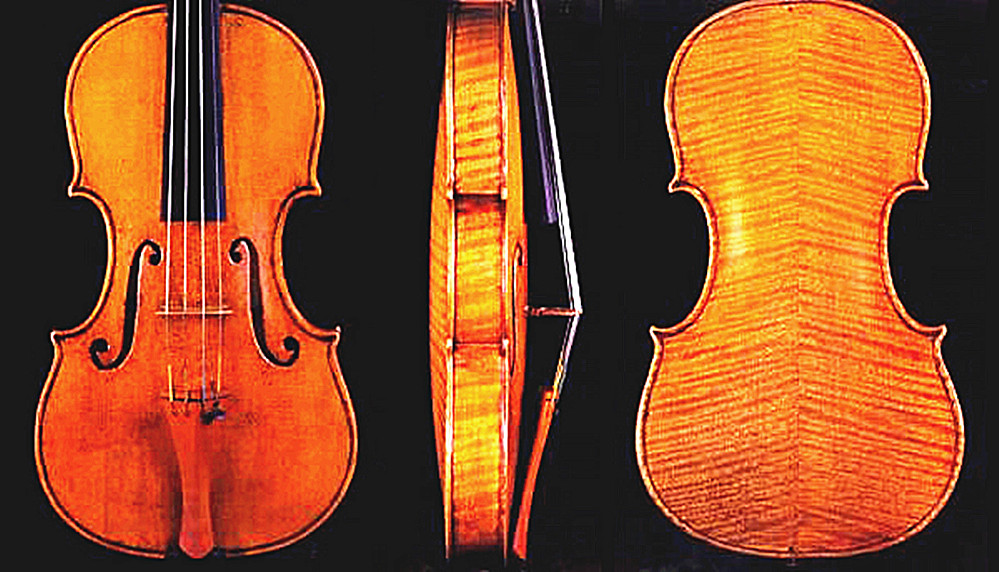 |
|
| |
|
耶稣·瓜尔内里辞世的1744年,约制作了九支小提琴,其中只有两支贴有原始卷标,这支「奥雷·布尔」名琴亦包括在内。根据瑞士重要琴商维若(Henry
Werro)的臆测,这支作工稍嫌粗略的提琴,证明了当时耶稣·瓜尔内里是处于身体衰弱的状况,然而,此琴却实为一件无与伦比的艺术作品。
其琴身总长为352mm,上侧板(upper bout)宽长166mm,中侧板(center bout)宽长110mm,下侧板(lower
bout)宽长203mm。涂漆虽较为稀薄但恰如其分,呈现温暖的黄橙(yellow-orange)色泽。
|
|
|
|
| |
|
In 1744, the year
of Guarneri's death, about nine violins were made, of which only two
bear the original labels, including the "Ole Bull". According to the
conjectures of Henry Werro, an important Swiss violin merchant, this
slightly rough violin proves that Jesus Guarneri was in a weak condition
at the time, but it is actually an unparalleled work of art. The body
length is 352mm, the upper side panel (upper bout) is 166mm wide, the
middle side panel (center bout) is 110mm wide, and the lower side panel
(lower bout) is 203mm wide. The paint is thin but appropriate, showing a
warm yellow-orange color. |
|
|
|
| |
|
背板(back)是由两块枫木(maple)所制成,双拼面板(two-piece
belly)则由两块不相称且不同年份的云杉木(spruce)拼板而成。
背板的木头质量极佳,有色彩鲜明而呈波状的虎纹(flame),侧板(rib)木头的斜线虎纹也相当均匀,与背板极为相称。
此琴的琴身轮廓较为坚挺刚硬,与耶稣·瓜尔内里的「加农炮」(“Il Cannone”)名琴相较之下,缺乏圆润的弧线。 |
|
|
|
| |
|
The back is made
of two maple pieces, and the two-piece belly is made of two incongruous
spruce pieces of different ages. The wood of the back plate is of
excellent quality, with a bright and wavy flame, and the diagonal tiger
of the wood of the side plate (rib) is also quite uniform and perfectly
matched to the back plate. The body of this instrument is relatively
firm and rigid, and lacks a rounded arc compared to the famous "Il
Cannone" of Jesus Guarneri. |
|
|
|
| |
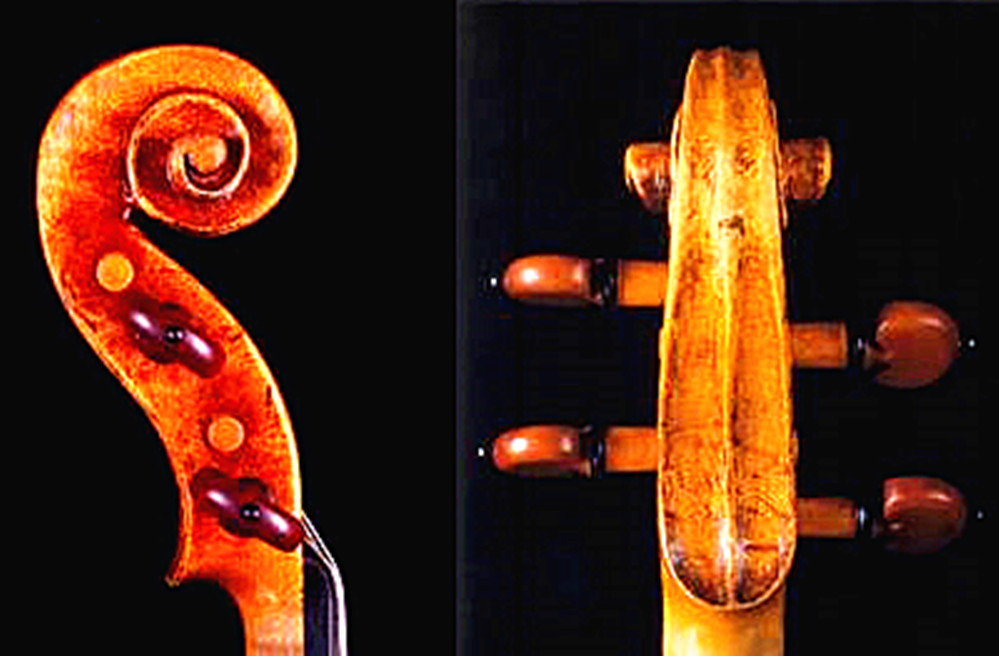 |
|
| |
|
突出的琴眼(eye)似乎展现了耶稣‧瓜尔内里迅速敏捷的磨锉挖凿之手艺,其刀凿痕迹亦相当明显。琴头的卷纹色泽较为黯淡,其背面凹槽(fluting)的刀凿痕迹清楚可见。 |
|
|
|
| |
|
The protruding eye
seems to show Jesus Guarneri's quick and agile rasping and digging
skills, and his cutting marks are quite obvious. The roll of the head is
relatively dull in color, and the chisel marks of the fluting on the
back are clearly visible. |
|
|
|
| |
|
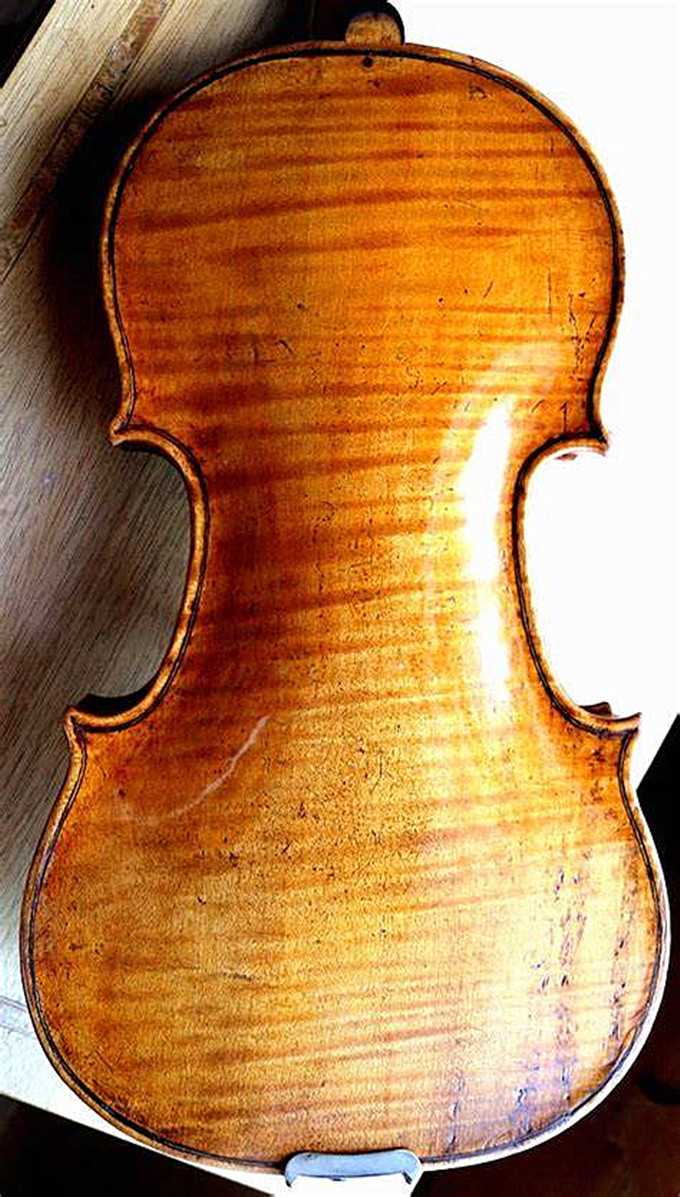 |
|
|
|
| |
|
奥勒.布尔(Ole Bull )
收藏的1732年制作的瓜奈利背板 |
|
|
|
| |
|
A Guarnelli 30 violin
backboard made in 1732 from the collection of Ole Bull |
|
|
|
| |
|
耶穌.奈利于1730年后,其手艺发展至登峰造极之境界,展现出独创性及个人风格,其整体的琴身结构优异且极富创造性,显露出他卓越的制琴天赋。
1730年至1735年这段期间,公认是他制琴的黄金时期。在他辞世的前几年,其作品较为粗獷质朴且不雅致,尤其是琴身的刀斧痕迹,一凿一銼皆表现出十足鲜明强烈的个性,具有独特的吸引力,音质也充满活力。 |
|
|
|
| |
|
After 1730, Jesus
Guarneri's craft developed to the peak of the state, showing originality
and personal style, and his overall body structure is excellent and
highly creative, revealing his excellent talent for piano making. The
period from 1730 to 1735 is regarded as the golden age of his piano
making. In the first few years of his death, his works are relatively
rough and simple and not elegant, especially the knife and axe marks on
the body of the piano, a chisel and a file are showing a full bright and
strong personality, with a unique appeal, and the sound quality is also
full of vitality. |
|
|
|
| |
|
挪威小提琴家奥雷·布尔(Ole
Bull)命名的耶稣·瓜奈里(Giuseppe Guarneri del
Gesu)名琴,被希尔(Hill)兄弟视为其「最具特色的作品之一」,极可能是瓜奈里大师最后的遗作。这支「奥雷‧布尔」名琴在奇美博物馆馆藏中备受瞩目,已成为「镇馆之宝」。 |
|
|
|
| |
|
The Giuseppe
Guarneri del Gesu, named after the Norwegian violinist Ole Bull, is
considered by the Hill brothers to be "one of his most distinctive
works" and is likely to be Guarneri's last work. This "Ole Bull" famous
piano has attracted much attention in the Chi Mei Museum collection and
has become the "treasure of the town museum". |
|
|
|
| |
 |
|
| |
|
布尔的达·萨洛有证据表明,一座狭窄的桥已经安装在传统的位置上
|
|
|
|
| |
|
Bull’s da Salo with evidence
of a narrow bridge having been fitted forward of the conventional
position |
|
|
|
| |
 |
|
| |
|
奥勒.布尔(Ole Bull )
收藏的1732年制作的瓜奈利 |
|
|
|
| |
|
Ole Bull’s 1732 Guarneri 30 |
|
|
|
| |
|
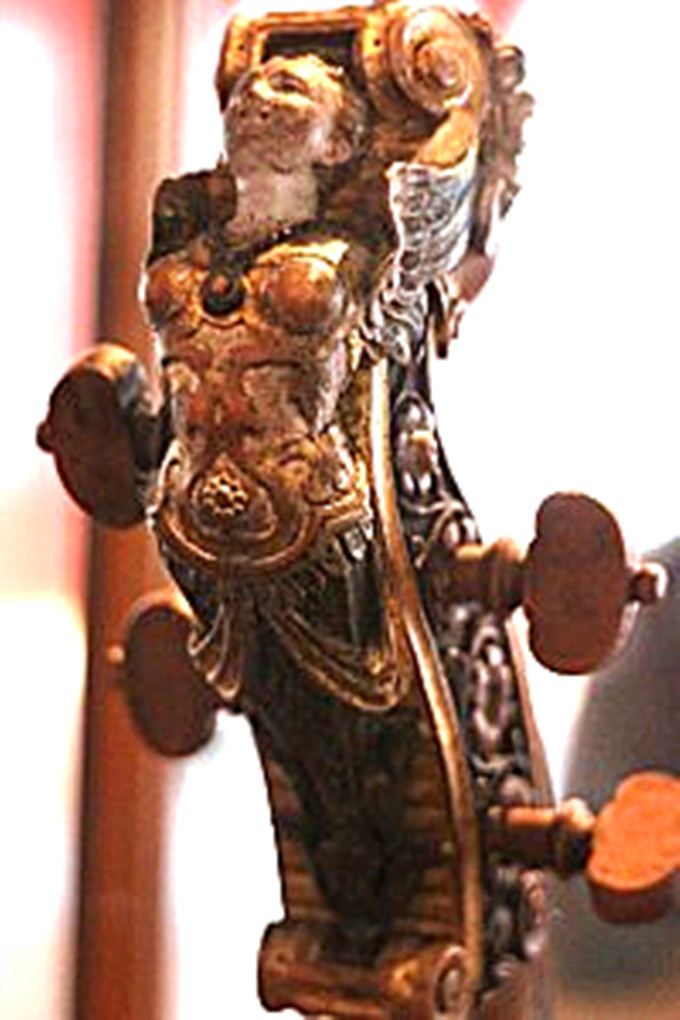 |
|
|
|
| |
|
奥勒.布尔(Ole Bull ) 收藏的另一把瓜奈利琴头 |
|
|
|
| |
|
Another Guanelli from Ole Bull's collection |
|
|
|
| |
|
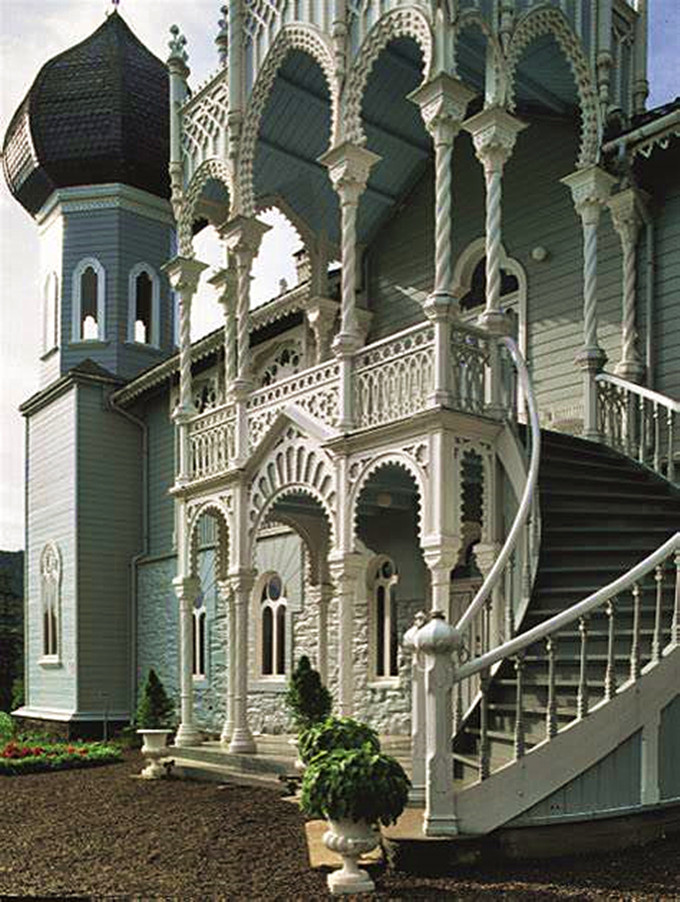 |
|
|
|
| |
|
挪威,吕素恩,音乐家奥勒·布尔公馆 |
|
|
|
| |
|
Norvège,Lysoen, Maison du
Musicien Ole Bull |
|
|
|
| |
|
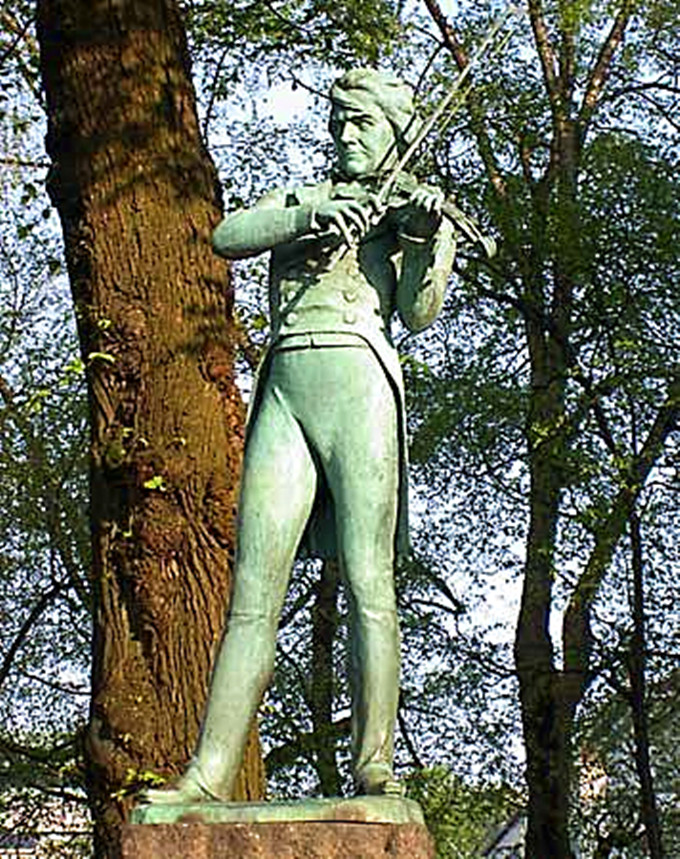 |
|
|
|
| |
|
坐落在奥勒.布尔(Ole Bull )家乡的雕像 |
|
|
|
| |
|
Album cover of Balakirev's
piano Concerto |
|
|
|
| |
|
|
|
|
|
| |
|
Today in the
history of music
On August 17, 1880, Ole Bull (1810 -- 1880), a power violinist, died at
Begen, exhausted and exhausted.His attempts to establish a Norwegian
colony in Pennsylvania and a conservatory in Norway failed miserably.
Ole Bull is a Famous Norwegian violinist and composer.He began to play
the violin at the age of four and studied with the Swedish violinist
Lundholm in the 1820s.
Ole Bull was a master violinist of his time, known as the "Paganini of
Northern Europe," who played with agility and passion.His improvised
compositions are also regarded as brilliant works.He was regarded as a
symbol of the Norwegian nation, and his performances and actions aroused
domestic and international attention to Norwegian folk music, which was
of great significance to the later development of Norwegian music.In
1860, he proposed the establishment of the Norwegian Academy of
Ethnomusicology, but failed for economic reasons, and the Ole Bull
Akademiet, founded in 1976, was finally granted his wish.
If you look up Ole Bull, you might start not with him, but with the
guarani violin named after him.Speaking of which, we are going to talk
about a family and a person, which is the family of the creation of the
violin, the Guarani family.The Ole Bulll is named after Joseph Guarneri
del Gesu (Joseph Guarneri del Jesus) of Cremona, Italy, in 1744.Joseph
Guanelli was born in 1698, the third generation of the Guanelli violin
family, and the best violin-maker in the family.He made about 150
violins in his lifetime, named del Gesu, or Jesu, because he made them
with crosses on them.The guanelli violin is the only one of its kind
today to rival the violin made by Antonio Stradivari.The famous Italian
violinist and composer Paganini (1782-1840) used a violin made by
Guanelli in 1742 until his death.Guanelli's violin, made in 1744, was
named Ole Bull, the most famous violin in history.
After 1730, Jesus Neri reached the peak of his skill, showing
originality and personal style. The overall structure of the instrument
was excellent and highly creative, which showed his outstanding talent
for making the instrument.The period from 1730 to 1735 is generally
regarded as the golden age of his qin making.In the first few years
after his death, his works were rough and unrefined, especially the
marks of the knife and axe on the piano body. Each chisel and file
showed full bright and strong personality, with unique attraction, and
the sound quality was full of vitality.The later he made the violins,
the more detailed they were, the more they deviated from the fine works
of 1730 and 1735.In short, the varied and original violins made by Jesus
Guanelli between his golden age and his death are among the finest
instruments on earth, on a par with the works of Antonio Stradivari.
About nine violins were made in 1744, the year of Jesus' death. Only two
of them bore the original label, including the famous Ole Buhl.Henry
Werro, an important Swiss dealer, speculated that the slightly sketchier
instrument was proof that Jesus Guanelli was in a state of physical
weakness, yet it was a work of art without equal.The length of the body
is 352mm. The upper bout is 166mm in width, the center bout 110mm in
width and the lower bout 203mm in length.The paint is thin but
appropriate, with a warm yellow-orange hue.
A back is made from two pieces of maple, while a two-piece belly is made
from two pieces of spruce that do not match and are of different
years.The quality of the wood on the back is excellent with bright and
wavy flame and the diagonal tiger pattern on the rib is quite even and
matches well with the back.The body of the lute is firm and rigid, and
lacks a rounded curve compared with the famous lute of Jesus Guarani ("
II Cannone ").The double panel of "Ole Bull" is made up of two different
logs.Diagonal tiger stripes on the side panels are extremely uniform and
the tiger stripes on the back panels are quite striking.
Finally, of course, get to know Ole Bull, not the famous piano player.
Robert Schumann once said, "Boer is one of the greatest violinists," and
regarded him as a master on a par with Nicol Paganini.Franz Liszt, a
French journalist, dubbed him "a formidable rival to Paganini", earning
him the nickname "The Scandinavian Paganini".Bull's place in the history
of the violin is not merely that of a virtuoso; his passion and love for
the violin have earned him the title of connoisseur and collector, and
even more an accomplished violin-maker and guqin repairman.
His unique interpretive concepts and expressiveness, skillful
improvisation, and mellow timbre exude a strong and profound appeal, and
are highly praised by the audience wherever he goes.He became The
greatest violinist of his time when he won an overwhelming victory at
The Philharmonic Society Concert in London in 1836, and The Times
commented, "His mastery of The instrument is beyond perfection."During
his stay in England from 1836 to 1837, Buhl sold his first Guanaili and
bought another guanaili from 1744, which he used for a long time to play
around the world. This guanaili is the "Ole" in the chime Museum's
current collection.The famous "Boer" musical instrument is undoubtedly
the most precious musical instrument of Boer.
At one point in his life, Buhl owned 10 pianos, including two Guanelli,
three Stradivarius, one Nicol Amati and one Dasarot, according to
Cozio.com.Boer has these masters, on the stage in fact one by one to
play his flexible expression and adaptability.The music critic Eduard
Hanslick said of his appreciation of Boer's virtuosity: "The overtone
and doublet play is surprisingly steady and crisp, the staccato play is
even better, and his playing is unrivalled and his tone is perfectly
soft."In terms of the history of violin playing, Buhl's brilliant style
and dramatic technique of expression made him a violinist Henry
Vieuxtemps called a "miracle performer."
1. Violin Concerto in A Major, Op. 4 (1834;(amended 1864);Violin
Concerto in A major by Ole Boneman Bull. |
|
|
|
| |
|
|
|
|
|
| |
|
|
|
|
|
| |
|
【奥勒·波内曼·布尔】A大调小提琴协奏曲 |
|
|
|
| |
|
“Grand
Concerto”,Op.4 |
|
|
|
| |
|
A大调小提琴协奏曲(“大协奏曲”),作品4
(1834;(修订于1864年)奥勒·博内曼公牛(1810-1880)
第1乐章主行板-主快板
第二乐章抒情慢板
第三乐章慢板田园回旋曲中速 |
|
|
|
| |
|
Violin
Concerto in A major ("Grand Concerto"), Op. 4 (1834;
revised 1864) Ole Bornemann Bull (1810-1880)
Movement 1 Andante maestoso - Allegro maestoso
Movement 2 Adagio sentimentale: Adagio sostenuto
Movement 3 Rondo pastorale: Moderato |
|
|
|
| |
|
挪威作曲家奥尔·布尔《小提琴协奏曲》的首次录音文档免费下载,数万用户每天上传大量最新资料,数量累计超一个亿,【doc】挪威作曲家奥尔·布尔《小提琴协奏曲》的首次录音挪威作曲家奥尔?布尔《小提琴协奏曲》的首次录音提琴协奏曲的首次录音,对于挪威作曲家奥尔布尔(OleBul1)的名字也许国内的广大音乐爱好者还比较陌生.但在十九世纪的欧洲乃至世界范围,这个名字可谓是家喻户晓!为纪念挪威这位着名的作曲家和小提琴演奏家.挪威LindbergLyd(2L)公司于2009年6月在世界上首次录制了奥尔?布尔的两首小提琴协奏曲.小提琴演奏家是AnnarFolleso.担任伴奏的是挪威广播交响乐团,指挥家是OleKristianRuud, |
|
|
|
| |
|
The first
recording of The Norwegian composer ORR Buhr's
Violin Concerto is free to download, and tens of
thousands of users upload a large number of new
materials every day, with a total volume of more
than 100 million.The name of The Norwegian composer
OleBul1 may be unknown to music lovers in His home
country, but it was a household name in 19th century
Europe and around the world.In honor of the renowned
Norwegian composer and violinist, the Norwegian
company LindbergLyd(2L) made the world's first
recording of ORR LindbergLyd in June 2009.Boer's two
violin concertos. The violinist was Anna Folleso. He
was accompanied by the Norwegian Radio Symphony
Orchestra and directed by Olekri Tianruud. |
|
|
|
| |
|
手写乐谱,绝了!
奥勒·布尔,挪威小提琴家,探险家,算是挪威最早名声走出国界的作曲家。被誉为“北欧的帕格尼尼”,现在作品很少上演,但质量都不差(至少我觉得协奏曲的乐团部分写的就比帕格尼尼好)。希望你们喜欢 |
|
|
|
| |
|
|
|
|
|
| |
|
未得原作者编者授权严禁转载www.mt77.com任何内容 |
|
|
|
|
|
|
|
|
|
|
|
|
|
|


